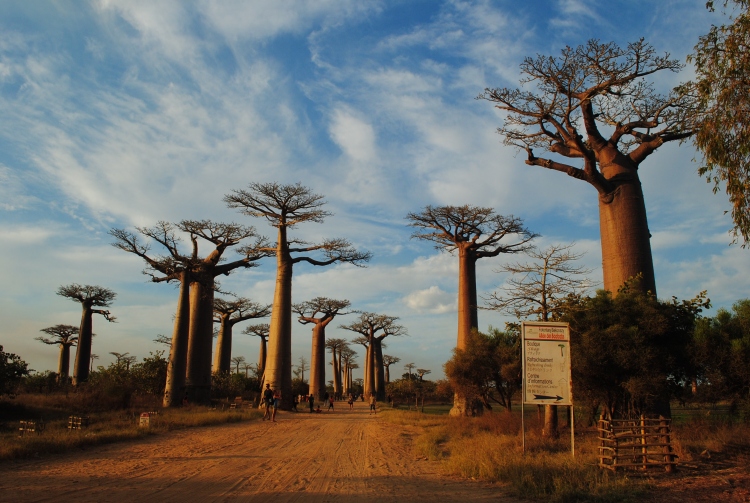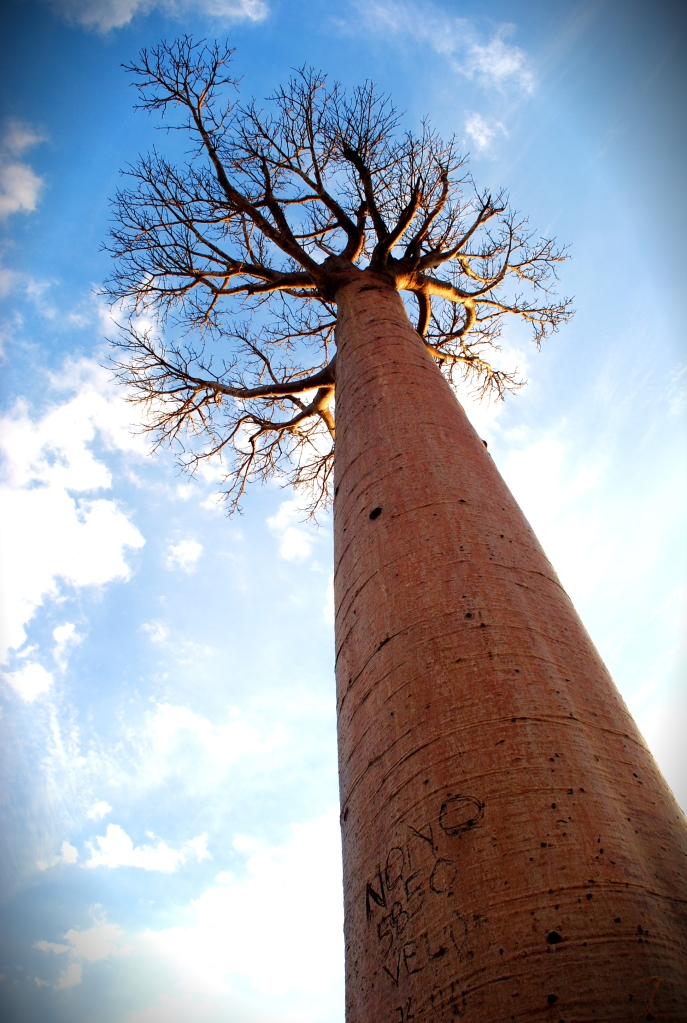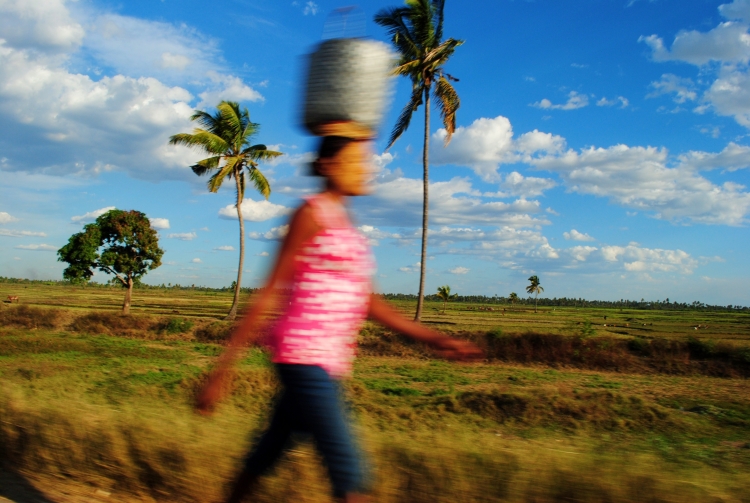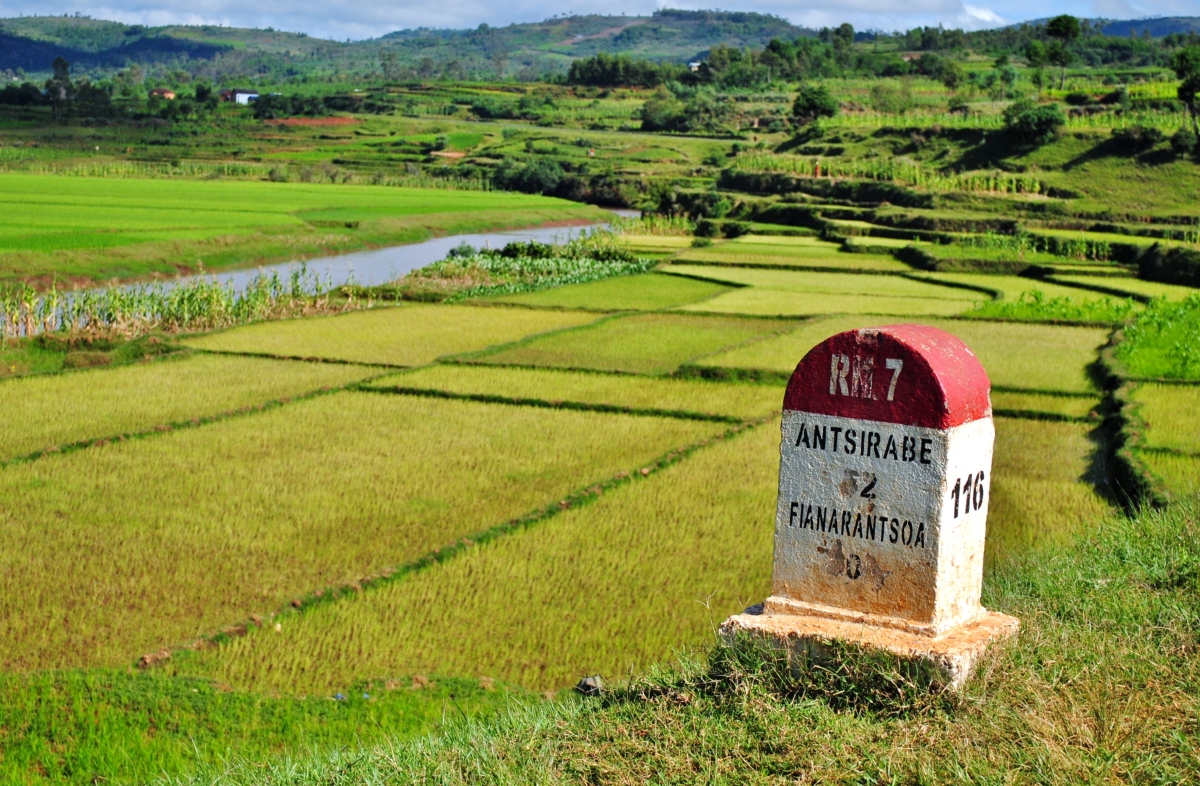I went to Madagascar’s most iconic and photographed site, and I didn’t bring my camera.
Just kidding. Though I did think about it for the purpose of writing a piece on how photography distracts from being present and the importance of absorbing and interacting with a place rather than documenting it. Maybe I should have done just that, but I selfishly wanted my postcard snapshot of the Avenue de Baobabs at sunset too. They’re just so damn photogenic.
I wasn’t alone in this. Car after car full of tourists rolled in, parking at the entrance closest to the road back to Morondava town or pausing for a few seconds to drop off groups returning from the Tsingy de Bemaraha National Park, so they could lazily walk the several yards of baobab-lined path back to their private four-by-fours just in time to get dinner. I don’t think I’ve ever seen such a large concentration of tourists in Madagascar in my whole two years of living here (although Isalo came close).
As we made our way down the sandy path, a group of small children ran up to us with chameleons on sticks. They knew from experience that basically every visitor would have a camera and demanded we take photos then give them small change. “Madame, photo! Madame, photo!”
It made me a little uncomfortable but one of my friends was impressed they had figured out they could make money off of this. They would have made a cute photo, but I was more interested in chatting with them. I asked one of the little girls her name in Malagasy. When I couldn’t pronounce it quite right she got pouty and stomped her feet “NO! Boon-BOO-na!” I laughed. I love it when kids step out of their robotic “oh, madame-o, please give me something” and let their personality escape.
I snuck a photo of her from behind, and she snapped her head around, obviously in recognition of the shutter’s ‘cliiick’ and was back to berating me with ‘madame, photo!’ I feigned ignorance. I told another group of boys near her I didn’t want to take their photo because they were dirty. They were amused. I was serious.
In the end, my seven friends and I all joined the photo-snapping frenzy, but I could tell that all of us still felt somewhat separate from the tourists passing through. We were observing them and their habits the same way they were observing the trees and cooing over cute little African children holding chameleons on a stick. Even with our cameras, we were putting our Madagascar-acquired habits to good use by simply standing in the middle of the road, chatting and staring, moving slowly and not worrying about time.
After we put away our cameras and piled into our taxis to head back to town for pizza, the cool night breeze forcing me to put on a sweater, I felt reminded of why I love travel — for these moments of absolute beauty and tranquility. For being separated from ‘the rest of the world’ but in such a way that isn’t anxious, but peaceful. I felt absolutely content to be where I was in that moment, but at the same time excited for the adventures to come once I’m off this island (which is soon…)
Oh yeah, and those photos:


Photos: (1) Entrance to the Avenue of Baobabs (2) Bobona and her chameleon (3) The kids in front of the baobabs (4) Baobab from the bottom of the trunk (5) A woman on the road to the Avenue de Baobabs (6) A traditional canoe called a ‘lakana’ on Morondava’s beach (7) Musicians in the ‘Rasta Bar’ in Morondava










